Antonio De Vito
 Born in Salento, Italy, Antonio De Vito graduated from Lecces Scuola dArte.
Born in Salento, Italy, Antonio De Vito graduated from Lecces Scuola dArte.
He carried out his first experiments in fresco painting under the tutelage of a restorer while studying at the
Art Institute in Urbino.This experience prompted him to move to Florence to complete his artistic and cultural
studies and to undertake complex research on the works of the great Masters.
Just as «disciples» studied their masters in Renaissance workshops, at first imitating them, then breaking out on their own,
he ideally frequented the same workshops and through intense study was able to master the complex fresco technique, identifying the methods and unearthing its secrets.
 Antonio De Vito has shown his work on various occasions throughout Italy, in prestigious sites such as Palazzo Strozzi, Palazzo Pitti in Florence
and Palazzo della Battaglia in Anghiari, never failing to inspire great interest and emotions via his special way,
halfway between scholastic and artistic, to reveal unusual aspects of Renaissance painting.
Antonio De Vito has shown his work on various occasions throughout Italy, in prestigious sites such as Palazzo Strozzi, Palazzo Pitti in Florence
and Palazzo della Battaglia in Anghiari, never failing to inspire great interest and emotions via his special way,
halfway between scholastic and artistic, to reveal unusual aspects of Renaissance painting.

This occurred especially when he presented the reconstruction he painted after accurate study of the
lost fresco by Leonardo Da Vinci «The Battle of Anghiari».
Important exhibitions take likewise his works abroad to illustrate techniques and peculiarities of the great masters of Italian Renaissance
ELISABETH BOUVIER
 Elisabeth Bouvier, was born in Lyon (France) and graduated in the University Lumiere-Lyon II in Classics and Art History, specialising in the Art of the Italian Renaissance. She pursued her career by researching and studying artworks restoration in Florence the cradle of Renaissance.
It was attending this course that brought her into contact with the fresco master Antonio De Vito.
Thus 'I MURI DELL ARTE FIRENZE Walls of Art' was created. The workshop now sees them working together, creating frescoes and developing educational exhibitions to be displayed all around the world.
Elisabeth Bouvier, was born in Lyon (France) and graduated in the University Lumiere-Lyon II in Classics and Art History, specialising in the Art of the Italian Renaissance. She pursued her career by researching and studying artworks restoration in Florence the cradle of Renaissance.
It was attending this course that brought her into contact with the fresco master Antonio De Vito.
Thus 'I MURI DELL ARTE FIRENZE Walls of Art' was created. The workshop now sees them working together, creating frescoes and developing educational exhibitions to be displayed all around the world.
Techniques
 "I Muri dell'Arte" is a workshop situated in the hills above Florence where Antonio De Vito practises a very ancient art : fresco painting.
"I Muri dell'Arte" is a workshop situated in the hills above Florence where Antonio De Vito practises a very ancient art : fresco painting.
 The artist creates frescoes using the purest of techniques techniques the same used by great masters like Giotto and Michelangelo -
by preparing plaster with sand and slaked lime and painting on its surface.
The artist creates frescoes using the purest of techniques techniques the same used by great masters like Giotto and Michelangelo -
by preparing plaster with sand and slaked lime and painting on its surface.
 Fresco means «fresh» in Italian. Since the image is painted directly on fresh plaster,
the actual process of painting must be completed in just a few hours.
Fresco means «fresh» in Italian. Since the image is painted directly on fresh plaster,
the actual process of painting must be completed in just a few hours.
Only naturally clay-based colors are used.
 The paint then permeates the wall, the colour is absorbed by the lime and becomes part of the wall itself.
The paint then permeates the wall, the colour is absorbed by the lime and becomes part of the wall itself.
 Fresco painting demands incredible speed and confidence, with little or no room for error or second thoughts.Due to the
difficulty of the technique, few artists use the traditional method today.
Fresco painting demands incredible speed and confidence, with little or no room for error or second thoughts.Due to the
difficulty of the technique, few artists use the traditional method today.
 Once complete, the fresco is left for several weeks to dry and to begin its natural aging process.
Once complete, the fresco is left for several weeks to dry and to begin its natural aging process.
 Antonio De Vitos experience and study of antique frescoes allow him to exploit the natural imperfections of the wall to
give his works the patina that so fascinate us in ancient paintings where Time has left its marks.
Antonio De Vitos experience and study of antique frescoes allow him to exploit the natural imperfections of the wall to
give his works the patina that so fascinate us in ancient paintings where Time has left its marks.
 The fresco is then ready to be detached from the wall using the «stacco» technique, personalized by the Maestro, and repositioned on a new wall or pannel where it will be displayed.
The fresco is then ready to be detached from the wall using the «stacco» technique, personalized by the Maestro, and repositioned on a new wall or pannel where it will be displayed.
 De Vitos frescoes owe their modernity to the result after detaching them from their original wall.
De Vitos frescoes owe their modernity to the result after detaching them from their original wall.
They become fragments, subject isolated from
their usual context, and take a life of their own, inviting the observer to create a new story and a new context.
 The wall, with its cracks and roughness, makes up a whole with the image.
The wall, with its cracks and roughness, makes up a whole with the image.
 The scratches and the cracks are not made by chance but they have been put there deliberately by the artists creative imagination;
they no longer detract from the beauty and the mystery but they add to them.
The scratches and the cracks are not made by chance but they have been put there deliberately by the artists creative imagination;
they no longer detract from the beauty and the mystery but they add to them.
 The uniqueness of his work lies in revisiting classic subjects in a modern tone, while maintaining their fundamental nature.
A sign of yesterday for the art of today...
The uniqueness of his work lies in revisiting classic subjects in a modern tone, while maintaining their fundamental nature.
A sign of yesterday for the art of today...
Maglie (LECCE) - Italy
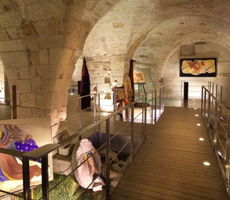

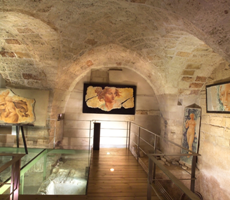
Ex conceria Lamarque, " I Muri Dell'Arte " - [2/12/2006 23/12/2006]
Florence - ITALY
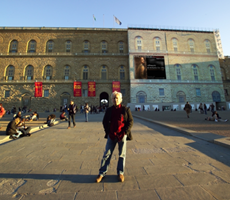
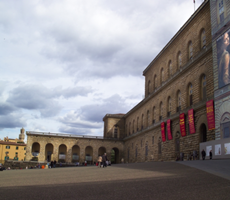
Rondó di Bacco di Palazzo Pitti - [18/10/2007 04/11/2007]
Anghiari (AREZZO) - ITALY
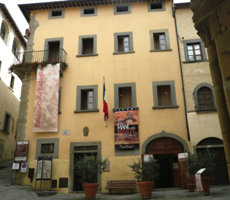
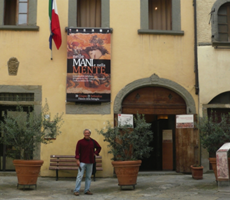
Palazzo della Battaglia, " Nelle mani e nella mente " - [28/06/2008 21/09/2008]
Florence - ITALY
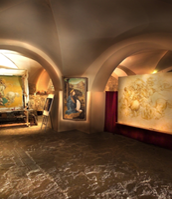
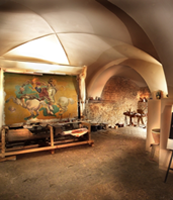

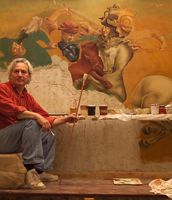
Fortezza da Basso, " Leonardo's workshop " - [25/04/2009 03/05/2009]
Melbourne - AUSTRALIA
South Banks, " Da Vinci's Secrets " - [17/10/2009 - 31/10/2009]
Sydney - AUSTRALIA
Town Hall, " Da Vinci's Secrets " - [20/05/2010 - 02/08/2010]
Otranto - ITALY



Torre Matta, " Segni e Segreti " - [03/08/2011 - 27/08/2011]
Guangzhou - CINA
Guangdong Science Center - [02/08/2012 - 31/12/2012]
Taipei - TAIWAN
National Museum of History, " The Divine Michelangelo " - [26/01/2013 - 12/05/2013]
Kaohsiung - TAIWAN
Kaohsiung Museum of Fine Arts, " The Divine Michelangelo " - [15/06/2013 - 29/09/2013]
Denver - USA
Denver Pavilions, " Da Vinci e Michelangelo side by side " - [10/05/2013 - --/--/----]
- VIDEO
- BROCHURE
- EXTERNAL LINK
I MURI DELL'ARTE
Bottega d'affreschi di Antonio De VitoMob : +39 328 90 44 529
devitoa@libero.it






